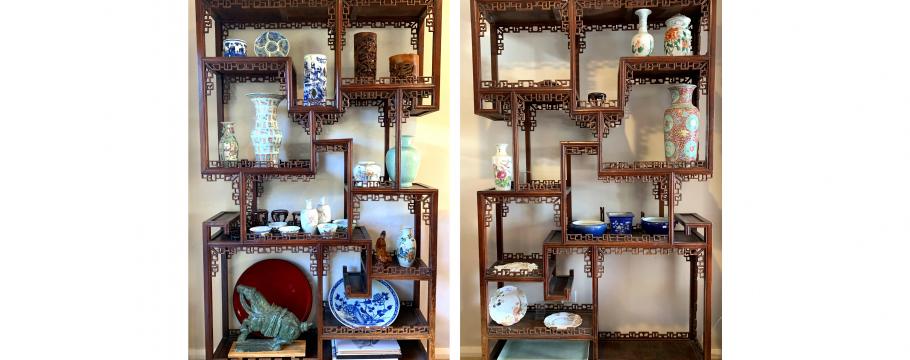

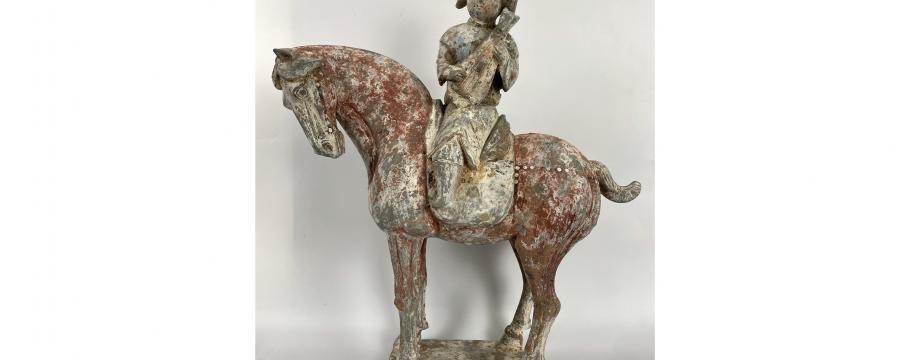

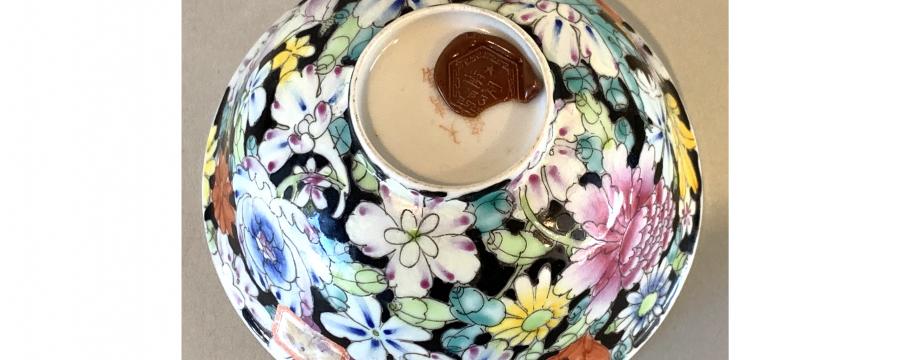
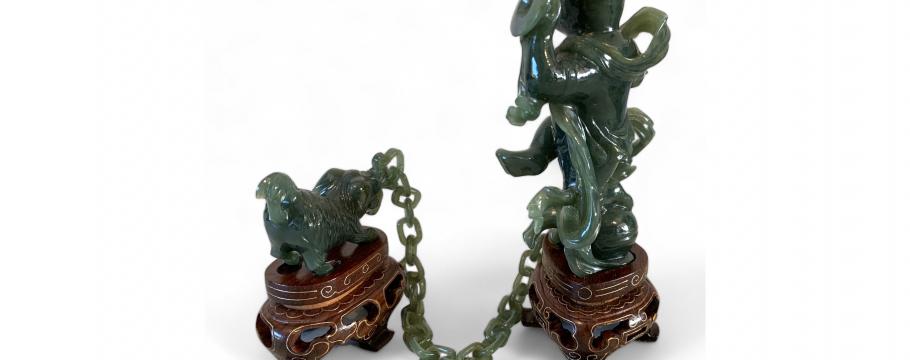
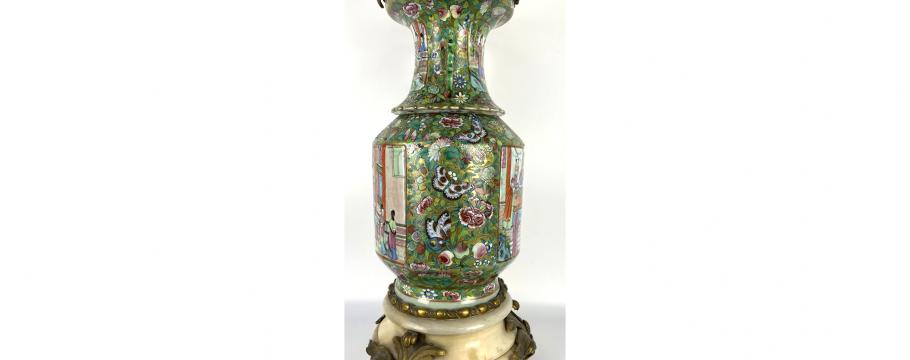

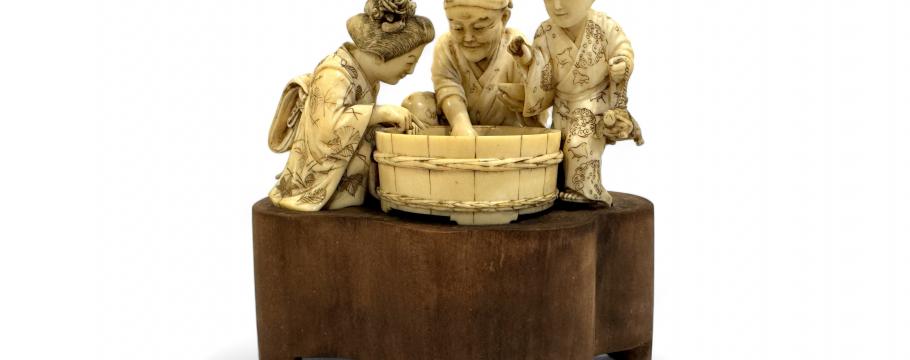

Melbourne auction collection important to Australia-Chinese cultural relations
Author: Richard Brewster | Posted: 18th July, 2024
When Hong Kong born Feng Xiao Wei took a position in 1969 with Radio Australia in Melbourne, little did she realise what an impact this would have on her future as a collector and seller of traditional Chinese furniture, art and antiquities.
Barely 22 years old and also known by her Anglicised name Teresa Chung, the young broadcaster was one of two (and the only woman) selected from 2000 applicants.
Teresa already had two years of commercial broadcasting experience with Hong Kong Commercial Radio after completing her education at St Mary’s Canossian College – but the Radio Australia offer was too good to pass up.
Three years after arriving in Melbourne she married her engineer husband and, by the mid-1970s, they had established both an importing business and a hospitality concern to take advantage of the recently established business ties between Australia and China.
“Doing business in China opened my eyes to Chinese art and antiquities,” Teresa said. “By the 1980s, we had become the sole Australian agent for traditional carved rosewood and lacquer furniture from the Chinese mainland.”
The move also meant Teresa met first hand Chinese craftsmen and artists who were skilled in working with jade carvings, porcelain and Chinese antiquities – all of which she began to collect.
“The Peoples Republic of China has strict rules regarding the export of these items,” she said. “They must have a wet mark at the base of the porcelain and be more than 100 years old.”
Teresa is now 77 and, with three adult children and two grandchildren, believes it is time to share her collection with others who are equally passionate about art and antiquity items.
Accordingly, she has asked auctioneer Phil Caldwell to dispose of her extensive collection as part of a broader online auction he is holding on Sunday July 28 in Melbourne.
“My collector journey was always blinded by beautiful things, which determined what I bought,” Teresa said. “Value was a secondary consideration.”
She realised how strong this belief was during a visit to a Chinese jade carving warehouse containing examples that had taken years to make. One piece really grabbed her attention.
“It was a mutton coloured jade carving of a goddess tending a sheep that was beautiful and pure – and so expensive.
“Noticing my interest, the warehouse manager said ‘if you don’t buy it, you don’t have an intrinsic awareness of how good it is’,” she said.
Mainland China wasn’t Teresa’s only collecting source. During the 1980s, she also frequented leading international art auction houses like Christie’s and Sotheby’s to purchase some of her collection – along with jade from famed Melbourne jewellers Kosminsky’s.
Another authority on Chinese art at the time with whom she had constant dealings was the curator of the Victorian Art Gallery.
Some of the more interesting auction items include intricately carved Chinese shelving used to display some of Teresa’s items (lot 33).
A palace size antique Chinese temple vase (lot 18) is a certain drawcard, while the Tang Dynasty (618-907CE) is represented with terra cotta figures of a horse and rider (lot 20) and a camel (lot 19).
A Qing Dynasty (China’s final imperial era from 1644-1912) flower bowl (lot 11) is another attraction while collectors should be keenly interested in a spinach green nephrite jade carving (lot 122) and an imported early Canton vase with later 19th century mounts (lot 34).
Various Japanese items among the collection include an important large Meiji period (1868-1912) ivory lidded vase (lot 44), an antique finely carved ivory okimono (lot 45) and a fine netsuke (lot 52).
A rare large Shan Burmese Buddha (lot 16) is bound to raise excitement levels among auction goers.
Apart from her passionate collecting, Teresa also has been active in the Australian Chinese community, particularly in the past 10 years since she retired from business.
Her early voluntary efforts saw her receive the 2001 International Year of Volunteers award from then Victorian Premier Steve Bracks.
Five years later, she was appointed a Justice of the Peace by the Victorian Governor in Council and in 2018 was elected as the Victorian Artist Society signatory member for her contribution and service to the arts – after 10 years as a hard-working watercolourist.
However, one of her proudest community achievements has been to serve as president of the Melbourne Chinese Masonic Society from 2018 to 2022 – the first woman ever appointed to that role.
The extreme poverty and disorganisation Teresa encountered when she first visited mainland China in the 1970s still lives in her memory.
“Everyone was dressed in grey or blue uniforms,” she said “In the days before computer systems, I had arrived and wanted to know when I could book a flight back to Australia.
“They told me there was one available the next morning. After that, they didn’t know.”





